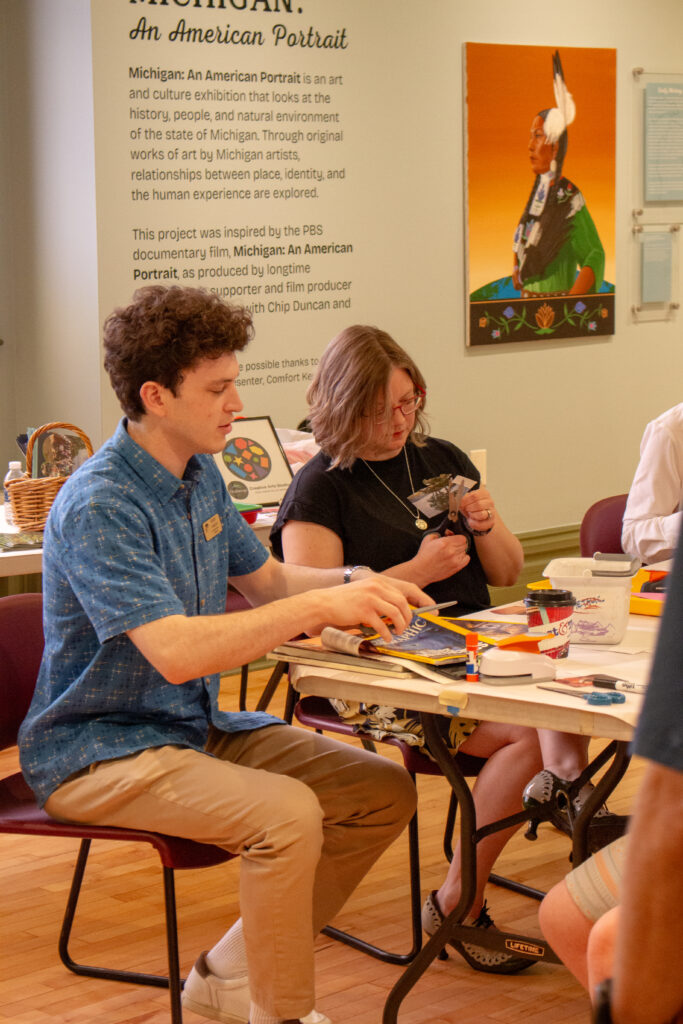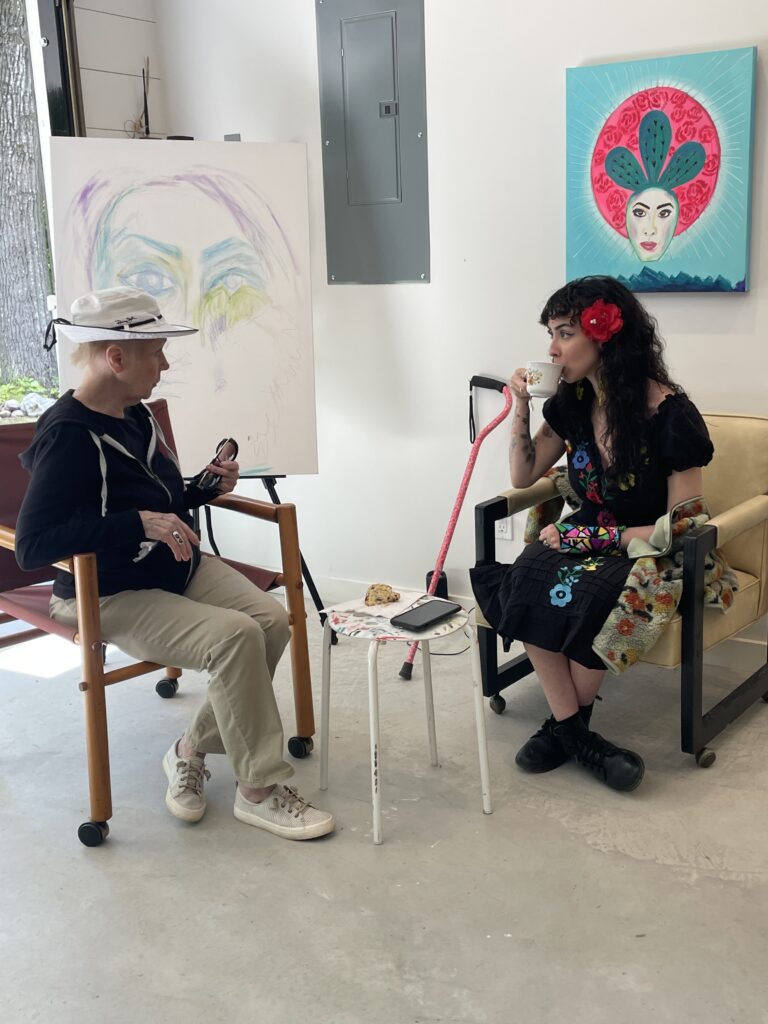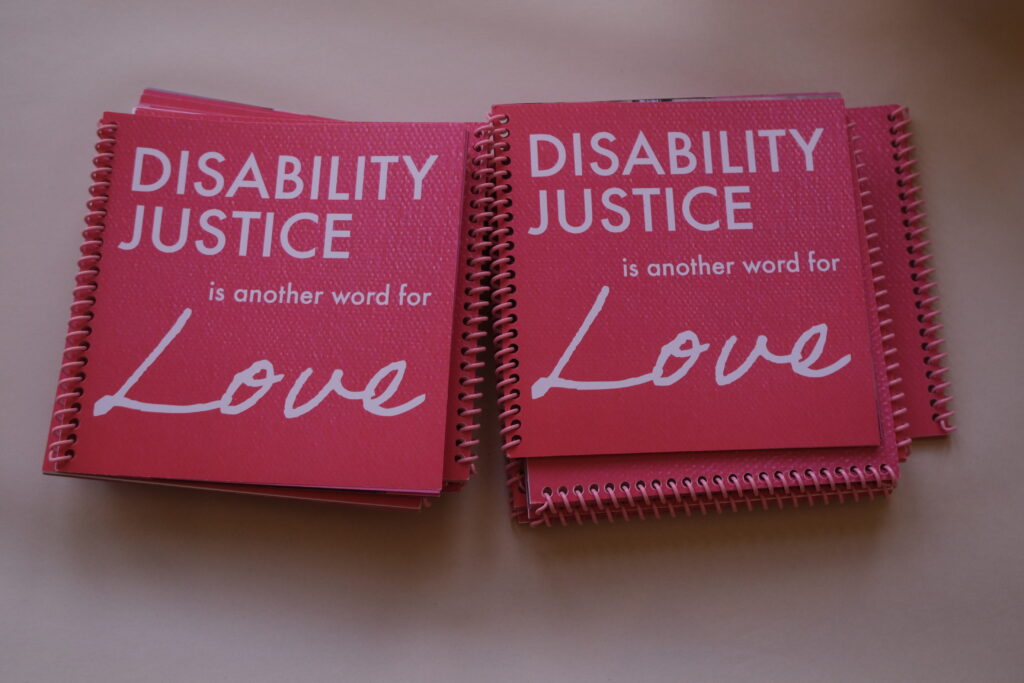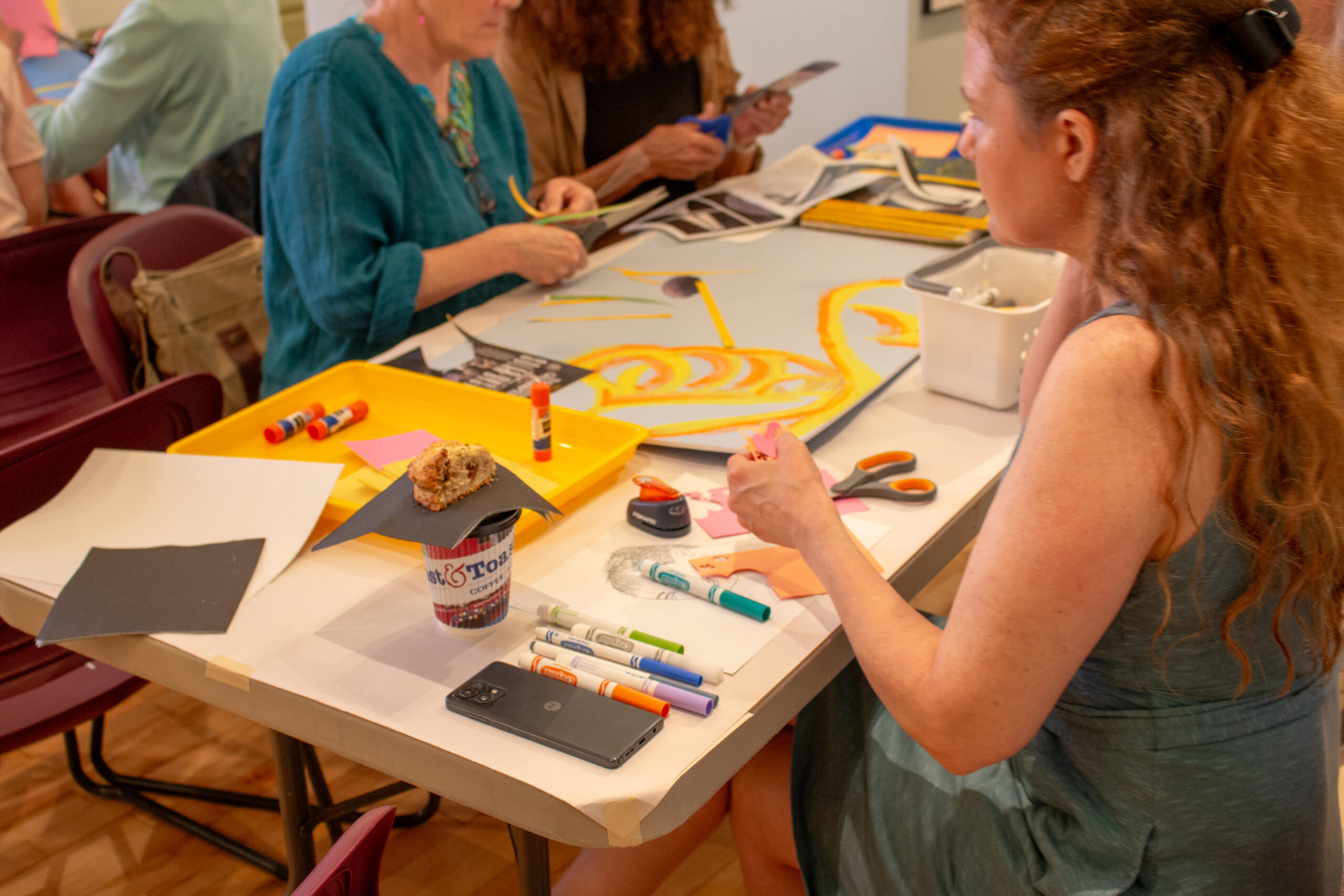Genevieve Ramos survived a serious car accident when she was twenty years old. Her rehabilitation program included art therapy workshops, and she soon discovered a passion for painting. It presented a new way for her to express the many identities and experiences within the disabled community. The artist creates self-portraits along with those of friends and colleagues. She also portrays notable figures like Supreme Court justice Ruth Bader Ginsburg (1933-2020) or Mexican artist Frida Kahlo (1907-1954).
Kahlo’s story especially resonates with Ramos because in 1925, when the art icon was 18 years old, a traffic accident changed her life, too. She was confined to bed in a full-body cast and spent her days painting. It was during this time that she developed some of the themes she is best known for: pain, healing, and honesty.
Ramos’s own experiences forever changed her life and redefined a creative path. She connected with other Latino women in Chicago and began to develop a series called Crip Paint Power. For this project, she creates bold, empowering portraits of disabled friends and collaborators. From June 2 to 21, she was also the artist-in-residence at Good Hart Artist Residency in northern Michigan. Here, she connected art and community to celebrate and uplift diverse perspectives.
LINDA ARMSTRONG; PROGRAM DIRECTOR, CHALLENGE MOUNTAIN“[Students] don’t compare their artwork or try to do it just like the person sitting next to them. They are just free with expressing themselves, and most of all, they compliment each other.”
Putting accessibility front and center
Good Hart was founded in 2013 by Sue and Bill Klco to foster more art, learning, and creativity in daily life. Eleven years in, the residency has expanded to include partnerships with local community organizations as part of its mission to support artists at all career stages. In 2019, Good Hart completed construction of a new studio and residence. An accessibility plan was built into the project, making it more reachable for artists with diverse abilities.
This year, Good Hart embarked on a program called “Elevating Diverse Voices” in collaboration with Challenge Mountain, an outdoors initiative for people with disabilities. Crooked Tree Arts Center also provided the space for Ramos’s workshop. Ramos was selected from a pool of three nominees put forward by Matt Bodett, who is also a disabled artist. He understands that making work and connecting with the local community happens only when it’s as accessible as possible.
“I had been invited to spend a long weekend there [at Good Hart] and went with access needs in mind,” Bodett says. Good Hart had already thought about access guidelines when they began building the new space. Bodett drew on his own experience there to help facilitate the June artist’s stay. He focused on day-to-day tasks, like what it was like to get to the local grocery store or to the beach. “Thankfully,” he says, “Good Hart had done so much preparation in building the residency that so many aspects of access had already been considered.”




Celebrating diverse perspectives
Ramos focused on creating new work during the residency. She opened the studio doors so others could visit and presented a talk at Crooked Tree Arts Center. Arts Midwest is thrilled to have supported the event through the GIG Fund.
For several years, Challenge Mountain and Crooked Tree have teamed up for a series of art classes, which allow artists with disabilities space and time to make art.
“One of the most amazing things I enjoy in the class is how the students don’t have the constraints or competitiveness regarding their artwork,” says Linda Armstrong, program director for Challenge Mountain. “They don’t compare their artwork or try to do it just like the person sitting next to them. They are just free with expressing themselves, and most of all, they compliment each other.”
In Chicago, Ramos is deeply committed to highlighting and advocating for the disability community. She co-organizes major events like the Chicago Disability Pride Parade. In Michigan, she welcomed others with disabilities to share ideas and create something together. ”My artwork champions disability culture,” Ramos says, which provided the foundation for the event.
For the group project, Ramos conceived of four poster boards assembled into a vertical, grid-like surface. She painted a number of power fists, representing resilience and strength. Then participants collaged images cut from magazines to reflect ideas about representation and visibility. Phrases like “the story of human difference” and numerous heart cutouts surround the central fist motif.
“I wanted to engage people who attended,” Ramos says, emphasizing that she wanted everyone to feel comfortable sharing their thoughts. She adds, “To express themselves creatively alongside each other is to rejoice in disability identity and community.”
